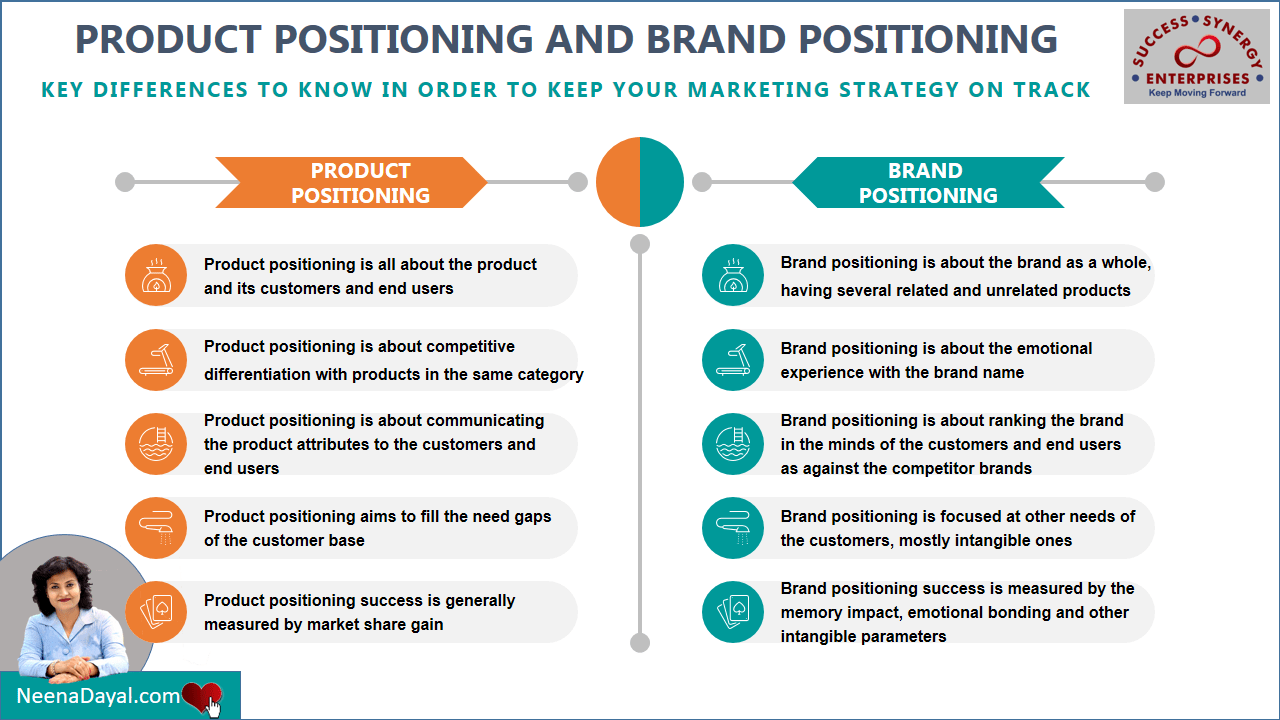With many years spent in advertising and marketing, I have noticed that people are many times terribly confused about product positioning and brand positioning.
I think every entrepreneur and business person should understand the differences between product positioning and brand positioning as this will help them in taking their branding strategy decisions properly. Proper positioning for products and brand ascertains their survival in the marketplace.
Here are the key differences between product positioning and brand positioning:
1) Product positioning is about conveying the product attributes to the customers. Brand positioning is about creating rank impressions of the brand in the minds of the customers.
Product positioning is about conveying the product attributes and how they best satisfy the needs of the customers or end users. This is generally done through directly highlighting the attributes and USPs through advertising. Brand positioning is about creating an impression in the minds of the customers, which ultimately defines the rank of the brand in the minds of the customers and end users in relation with the competitors. This is best done through specialized advertising campaigns, CSR initiatives and brand associations creating goodwill for the brand.
2) Product positioning is about competitive differentiation with products in the same category. Brand positioning is about emotional experience with the brand name.
Product positioning deals with creating differentiation about the products in the same category. This ultimately defines how the company wants the products to be perceived by the customers and end users. Larger companies create a wide array of products in the same category, which then compete against each other and create larger market shares for the company through product positioning.
For example, Coca Cola offers a number of products in the soft drinks category. These are all different products in terms of their taste and target audience having different logos. Thumbs Up is such a product, which is targeted towards adventurous customers who prefer risk taking.
Coca Cola retains a brand value, which is independent of all of its products. This is because of its brand positioning through advertising, sponsorships and other goodwill gestures.
3) Product positioning is all about the needs of the customers and end users. These needs can be tangible and intangible. Brand positioning is all about creating a memory impact of the brand, through emotional engagement, which is totally intangible.
Product positioning is aimed at filling all the need gaps for the customers and end users. It is depicted in such a way that the product is the best one to fulfill all the needs of the customers and end users. A brand may have several products and they may also be in different categories catering to different target audiences.
For example Maruti Suzuki, the leading car manufacturer of India produces several cars, which are aimed at different target markets. It has luxury vehicles, catering to the high-end customers and also has cars, for the lower end customers.
The brand value of Maruti Suzuki is as a reliable and efficient automobile manufacturer. The products are all positioned differently catering to the varied needs of the target customer brackets.
4) Product positioning is measured by market share gain. Brand positioning is measured by intangible associations of the brand value.
Product positioning deals with the tangible needs mostly so it can also be measured by the gain in the market shares over a period of time. Product positioning can be thus changed rapidly, if the product performance is not working out.
There can be many product positioning strategies used for proper product positioning and repositioning. Brand positioning is mostly about the intangibles experiencedwith the brand. This deals with how emotionally connected the people feel with the brand. These people may be customers, end users and even those who just know the brand and haven’t yet had any transactions with it. Brand positioning is very difficult to measure tangibly. It’s ascertained with the brand recognition and its emotional association.
Conclusion
Understanding product positioning helps you to reach the target customers and end users properly. Understanding brand positioning helps in creating long-term value for your brand.



